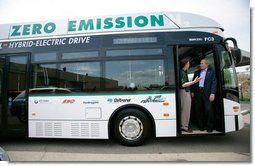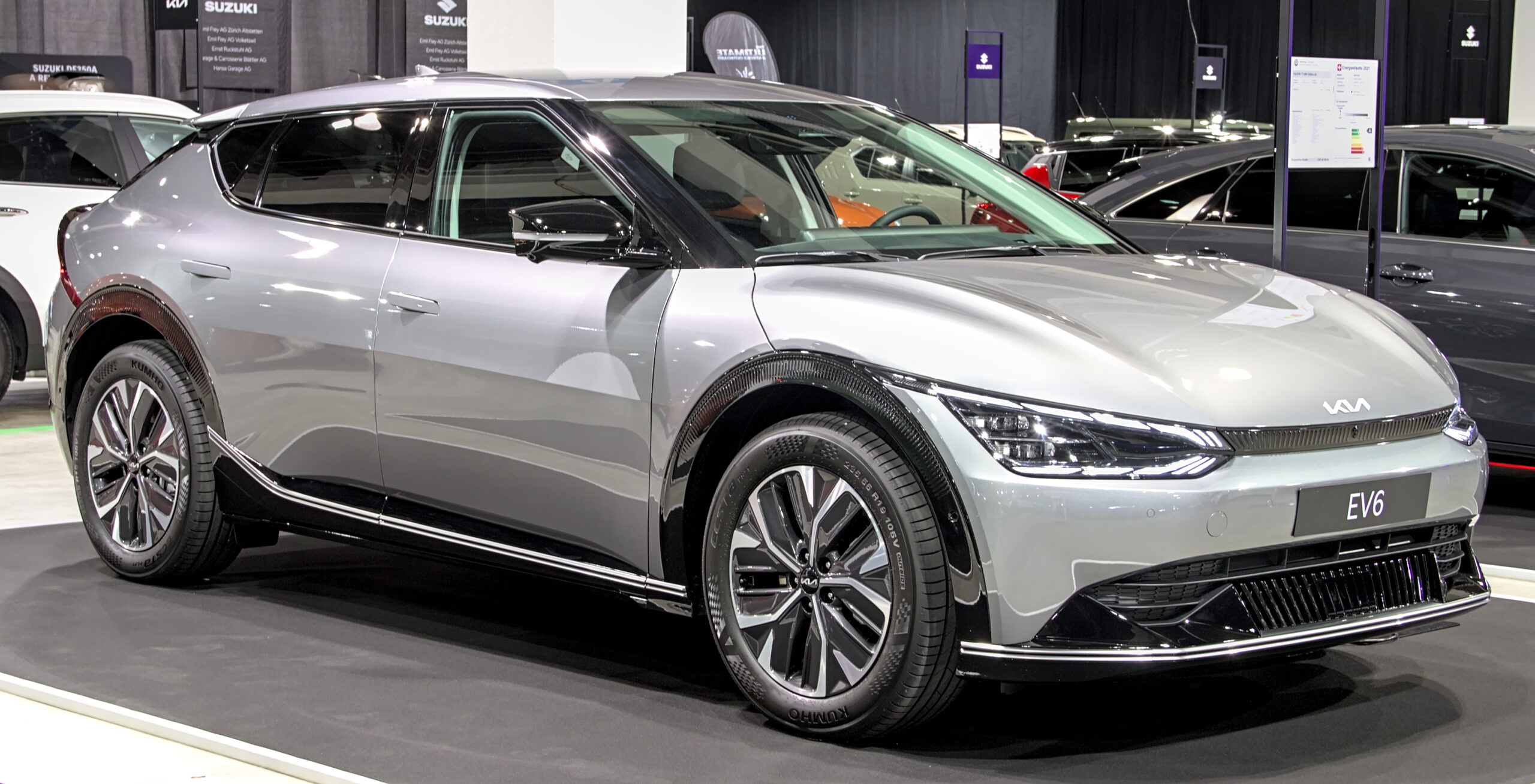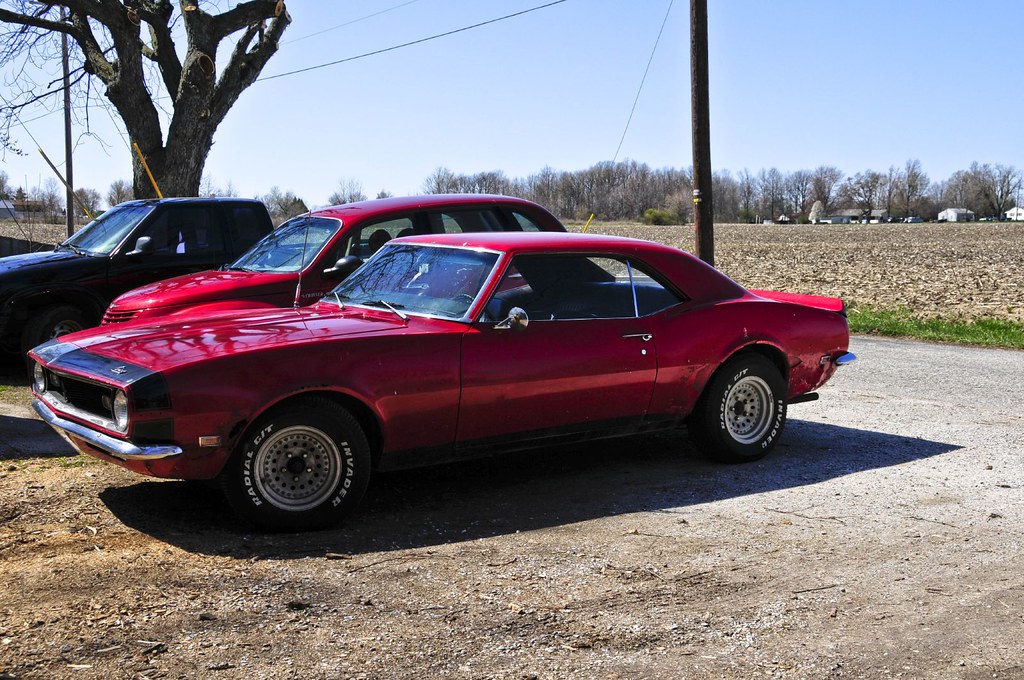
In an era where planned obsolescence seems to be the norm, there’s something truly remarkable about engines that can withstand the test of time and mileage. These mechanical marvels don’t just merely survive; they thrive well beyond what most consider a full automotive lifespan, demonstrating an enduring spirit that captivates enthusiasts and practical owners alike.
While the average modern vehicle might only last 150,000-200,000 miles before major issues begin to arise, certain engines have rightfully earned legendary status for routinely crossing the formidable 300,000-mile threshold with minimal fuss. These powerplants represent the absolute pinnacle of engineering reliability, often continuing to run smoothly and powerfully long after the vehicle’s body, electronics, and other components have visibly deteriorated.
What precisely separates these exceptional engines from their less durable counterparts? It typically comes down to a combination of overbuilt designs, conservative tuning from the factory, simple yet incredibly effective engineering solutions, and the deliberate choice of materials for longevity rather than mere cost-cutting. These engines weren’t engineered to be disposable; they were meticulously built to endure, providing unwavering service for decades. For budget-conscious consumers, dedicated enthusiasts seeking dependable project vehicles, or simply anyone who values longevity over the latest fleeting features, understanding which engines offer true bulletproof reliability is truly invaluable knowledge.
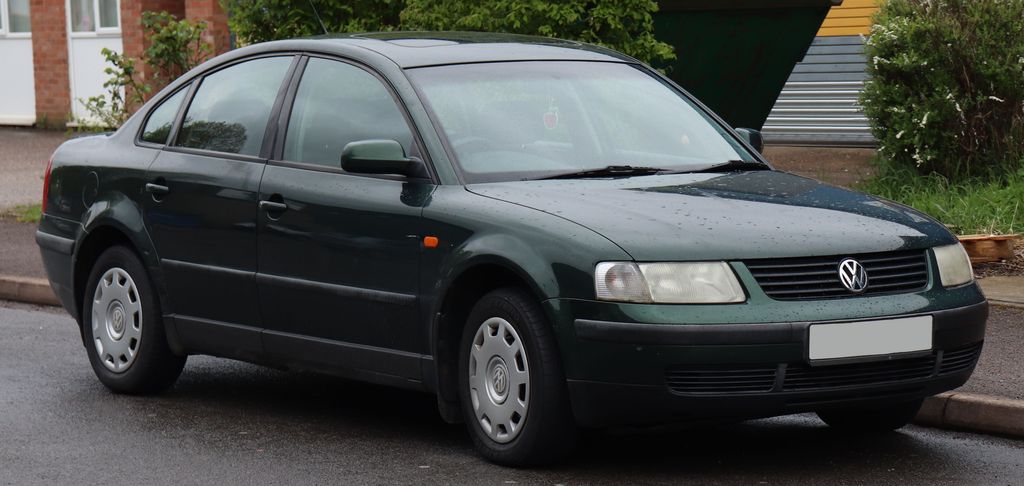
1. **Volkswagen 1.9 TDI**Volkswagen’s engines are, surprisingly, not especially known for being the most reliable across their entire lineup. Many of the group’s powerplants are frequently discussed on enthusiast forums, with numerous people warning potential buyers away from them due to perceived weaknesses. However, this common perception simply does not hold true for the revered 1.9 TDI, an engine that stands as a stark exception to the rule.
The 1.9 TDI became widely available in the 1990s, and it enjoyed a remarkably long and successful run, finding a home in a vast array of the VW Group’s brands all the way to the late 2000s and even into the early 2010s in some specific cases. It found its way into everything from the ever-popular Golfs and Jettas to a significant number of Skodas and Seats over in Europe and other international markets, establishing a broad footprint.
Whenever the conversation among automotive experts and enthusiasts shifts to reliable, long-lasting diesel engines, the 1.9 TDI consistently earns top points and high praise. With regular and proper maintenance, these engines won’t just comfortably last 300,000 miles; rather, they are known to go for an astonishing 600,000 miles, or potentially even more than that. They are also widely celebrated for starting up in freezing temperatures with remarkable ease, which is certainly not something you can confidently say for a lot of other diesel engines on the market. Amazingly, VW even offered the 1.9 TDI in the U.S. for a little while, making it a highly desirable find for collectors and those seeking ultimate reliability. If you happen to pick up an older VW equipped with this engine, you most certainly won’t regret it, as we ourselves featured it prominently in our own rundown of the most reliable engines ever made by Volkswagen.
Read more about: The 12 Most Electrifying 1980s Cars Coveted by Collectors, and the Musicians Who Share the Passion
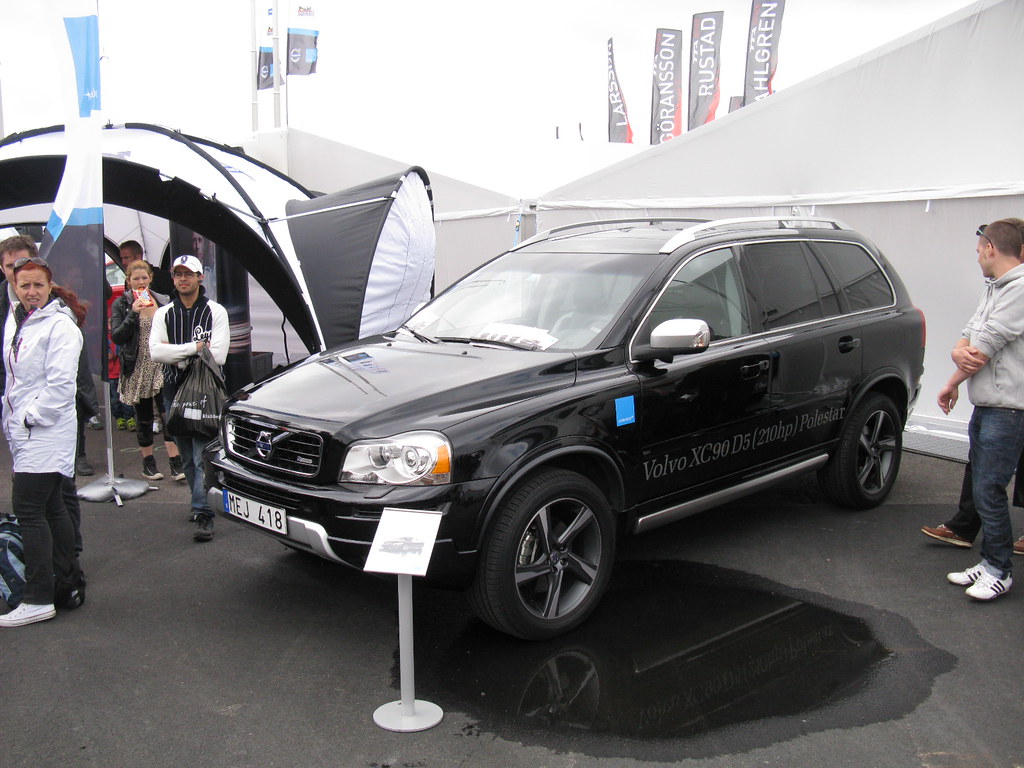
2. **Volvo D5**Volvo was among the pioneering automotive manufacturers to adopt five-cylinder engines in a significant number of its vehicles, sharing this distinction with notable brands like Audi. This design initially started out as a gasoline five-cylinder unit, prominently finding a home in high-performance models such as the brilliant V70 R, showcasing its versatility and power potential within the Volvo lineup.
Eventually, recognizing the demand for alternative fuel options, Volvo also introduced a robust diesel five-cylinder variant, the D5, specifically catering to those discerning drivers who preferred the incredible low-end torque and efficiency offered by ‘oil burners’. For the vast majority of its operational life, the D5 was a potent 2.4-liter unit, delivering consistent performance and reliability. However, a more fuel-efficient 2.0-liter version was later introduced to the lineup in the late 2000s, responding to evolving market demands for improved economy.
In its most powerful configuration, the D5 engine was capable of putting out a very respectable 212 horsepower, a substantial figure for its class, and it was quite often paired with Volvo’s renowned All-Wheel Drive (AWD) system, further enhancing its capabilities and appeal. It’s worth noting that Volvo never officially offered this particular engine in North America, which is a missed opportunity for many enthusiasts. However, for those with a penchant for automotive projects, a D5 engine swap might indeed prove to be a remarkably fun and rewarding idea, bringing its legendary reliability to new shores.
The single most notable characteristic about the Volvo D5 engine is its absolutely incredible reliability and an almost bulletproof nature. With a regimen of regular and diligent maintenance, these engines have no problem whatsoever reaching the impressive 300,000-mile mark, and quite possibly even exceeding it significantly. Furthermore, being meticulously engineered and built in the harsh climates of Sweden, the D5 can also handle severe winter conditions with remarkable ease, making it a dependable companion no matter the weather.
Car Model Information: 2018 Chevrolet Corvette Grand Sport
Name: Volvo V70
Manufacturer: Volvo Cars
Production: 1996–2016
Class: Executive car
BodyStyle: Station wagon,crossover (automobile)
Layout: Front-engine, front-wheel-drive layout,front-wheel drive
Predecessor: Volvo 850
Successor: Volvo V60,Volvo V90
Categories: 2010s cars, All-wheel-drive vehicles, All articles with dead external links, Articles with dead external links from September 2017, Articles with permanently dead external links
Summary: The Volvo V70 is an executive car manufactured and marketed by Volvo Cars from 1996 to 2016 across three generations.
The name V70 combines the letter V, standing for versatility, and 70, denoting relative platform size (i.e., a V70 is larger than a V40, but smaller than a V90).
The first generation (1996–2000) debuted in November 1996. It was based on the P80 platform and was available with front and all-wheel drive (AWD), the latter marketed as the V70 AWD. In September 1997, a crossover version called the V70 XC or V70 Cross Country was introduced. The sedan model was called Volvo S70.
The second generation (2000–2007) debuted in spring 2000. It was based on the P2 platform and, as with its predecessor, was also offered as an all-wheel drive variant marketed as the V70 AWD and as a crossover version initially called V70 XC. For the 2003 model year, the crossover was renamed to XC70. The sedan model was called Volvo S60.
The third generation (2007–2016) debuted in February 2007. It was based on the P3 platform and marketed as the V70 and the XC70. Production of the V70 ended on 25 April 2016, the XC70 continued until 13 May 2016. The sedan model was called Volvo S80.
Get more information about: Volvo V70
Buying a high-performing used car >>>
Brand: Volvo Model: V70 R
Price: $59,896 Mileage: 26,662 mi.
Read more about: The Ultimate Guide for Pet Owners: Uncovering the Top 14 Vehicles for Safe and Comfortable Travel with Canine Companions

3. **Mercedes-Benz OM617 Diesel Inline-Five**It’s genuinely hard to believe that there was a golden era when Mercedes-Benz was known, among its many distinctions, for immense reliability and almost unparalleled longevity. Especially throughout the 1980s and 1990s, there was hardly anything that could truly kill a Mercedes, apart from perhaps blowing one up in a rather dramatic fashion. Then again, if that Mercedes happened to have the fabled OM617 engine under its hood, we’re pretty sure even such extreme measures wouldn’t be enough to silence this mechanical marvel.
The OM617 stands as the three-pointed star’s only ever production five-cylinder engine, and notably, it is exclusively a diesel unit. Mercedes never actually ventured into the realm of gas-powered, five-cylinder engines, so if you’re seeking those unique I5 thrills from a vintage Mercedes, it absolutely has to be this one. The good news, however, is that Mercedes generously placed the OM617 into quite a few popular models during its production run. Displacing 2.7 liters in the majority of its applications, and sometimes a robust 3.0 liters, the OM617 was a veritable powerhouse, delivering a copious amount of low-end torque that made it a joy to drive.
The brilliance of the OM617’s design lies profoundly in its inherent simplicity and truly robust construction. Built with an iron block that features seven main bearings meticulously supporting a forged steel crankshaft, the engine was, in essence, remarkably overbuilt right from its inception. Its indirect injection system, while admittedly less efficient than contemporary modern direct injection systems, proved to be remarkably reliable and extraordinarily tolerant of varying fuel quality – a crucial and highly beneficial advantage in many developing countries where these enduring vehicles frequently served as indispensable taxis and rugged utility vehicles for decades on end.
Unlike the more complex and often problematic high-pressure diesel systems of many modern engines, the OM617’s relatively low-pressure injection pump and its purely mechanical design meant there were far fewer complex components prone to failure. The pre-combustion chamber design also allowed the engine to run significantly smoother and quieter than many contemporary diesels of its era, all while maintaining its excellent and highly regarded longevity. With diligent and proper maintenance, these engines routinely surpass an incredible 500,000 miles, with numerous well-documented cases even exceeding a staggering 1,000,000 miles on their original internal components – a testament to its indestructible nature.
The OM617 turbo variant, which was first introduced in the early 1980s, successfully added the benefits of forced induction without compromising the engine’s legendary reliability in any significant way. Even with the additional heat and inherent stress of turbocharging, these engines remarkably maintained their famous durability. Their robust timing chain design further eliminated the often-dreaded need for timing belt replacements, thereby significantly enhancing their long-term reliability and reducing maintenance concerns. Maintenance on the OM617 is also refreshingly straightforward, featuring easily accessible components and generous service intervals for its era. The engine responds exceptionally well to regular oil changes with high-quality diesel-specific oil, and its purely mechanical fuel injection system remains fully adjustable and highly serviceable decades after its initial manufacture – a stark and welcome contrast to the often-unsupportable modern computerized systems as technology rapidly advances. Mercedes did offer this engine officially in North America, and foreign market models that utilized it are now old enough to import as well, making for a truly cool used car idea.
Read more about: Beyond the Benchmark: 10 Long-Haul Diesels That Redefine Durability, Clocking Over 400,000 Miles Before Retirement
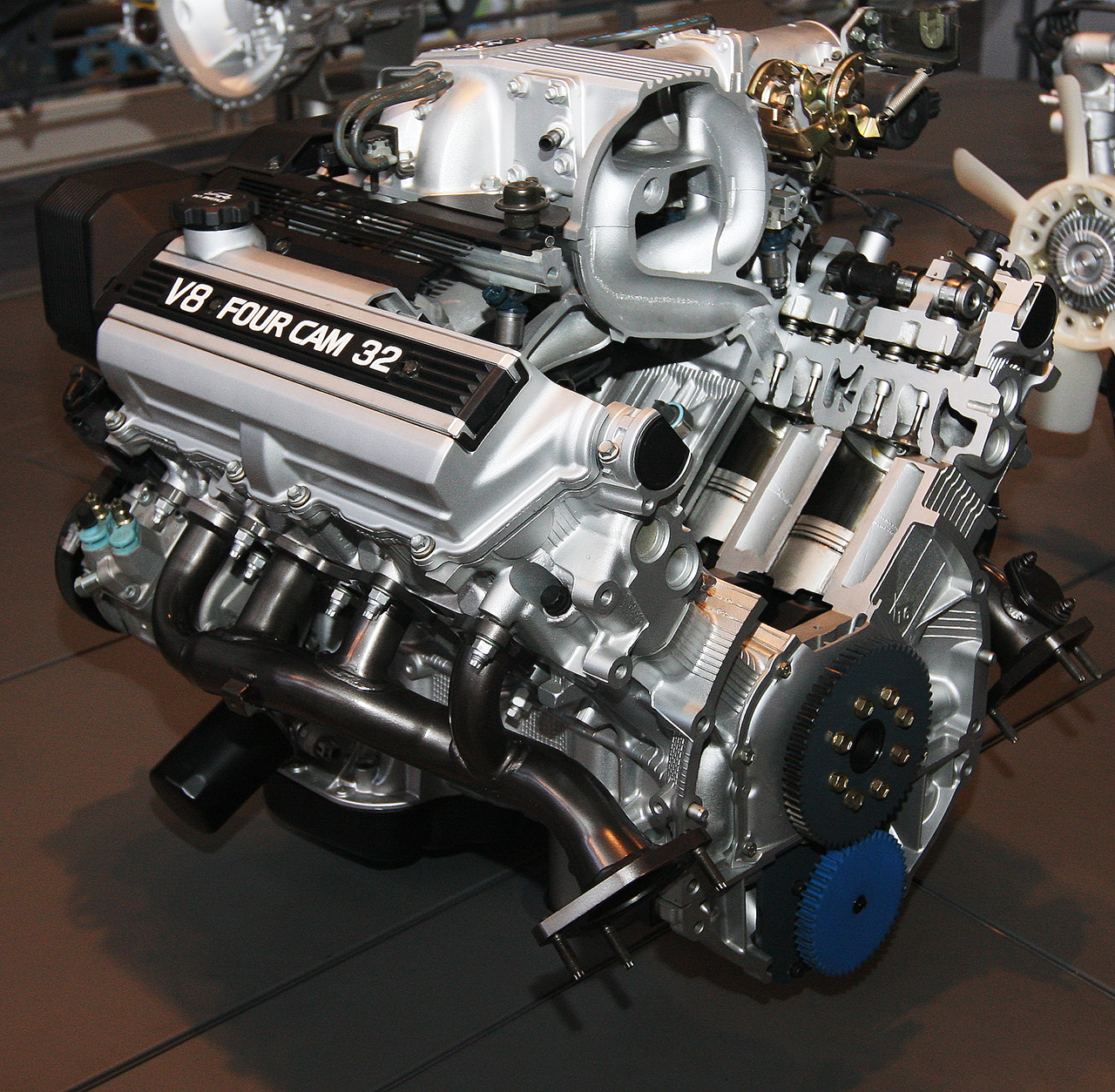
4. **Lexus/Toyota 1UZ-FE V8**One of the greatest and most compelling stories ever told in the world of automobiles is undoubtedly the captivating tale of Lexus. To summarize its remarkable genesis, Toyota made the audacious decision to directly take on the established German luxury brands in their own fiercely competitive arena, and against all odds, it actually succeeded with flying colors. Lexus is, to this very day, one of the only luxury car brands that not only survived but, on several significant occasions, decisively won the fight against the deeply entrenched German automotive giants. A substantial reason for this incredible triumph lies with the original Lexus LS, a vehicle that truly speaks volumes for itself.
The original Lexus LS is widely regarded as one of the most impressive modern luxury cars ever produced and stands as one of the most successful Lexus models in the brand’s storied history, not least because of the meticulously engineered powertrain residing under its hood. The earliest iteration of the LS400 came equipped with a truly magnificent 4.0-liter naturally-aspirated V8 engine, famously dubbed the 1UZ-FE. Even though this was undeniably a luxury car, Toyota, with its renowned commitment to quality, did not forget to generously sprinkle some of its well-known reliability magic into the LS400’s design and construction, ensuring it had both luxury and endurance.
What truly makes the 1UZ-FE extraordinary is its uncompromising approach to durability, a hallmark of Toyota’s engineering philosophy. The block and heads were meticulously constructed from a lightweight aluminum alloy, but crucially, with significantly more material than was strictly necessary, providing exceptional rigidity and strength. The crankshaft itself was fully balanced and painstakingly crafted from forged steel, confidently supported by six main bearings with cross-bolted main caps that ensured extraordinary stability and minimal flex even at sustained high RPMs. The connecting rods were equally robust and overbuilt, notably remaining unchanged even when the engine was later adapted for supercharging in the formidable Toyota TRD program, a testament to their inherent strength.
The valvetrain featured sophisticated dual overhead cams with a belt drive system that, while indeed requiring diligent service at 90,000-mile intervals, proved exceptionally reliable when properly maintained according to schedule. Toyota’s deliberate choice of a timing belt over a chain was a considered one, as the belt operation inherently reduced noise and vibration, factors that were absolutely crucial for a luxury car engine aiming for refinement, while the service interval thoughtfully aligned with other major maintenance milestones. Most impressively, the 1UZ-FE was designed as a non-interference engine, meaning that even in the exceptionally rare event of a catastrophic timing belt failure, the pistons and valves would not physically contact each other, thus preventing any catastrophic engine damage.
Toyota’s engineering thoroughness extended to every conceivable aspect of the engine’s design. The sequential fuel injection system, for example, was meticulously designed with redundancy firmly in mind, capable of maintaining full functionality even with partial component failures. The engine’s advanced cooling system featured precise coolant flow management that effectively prevented hot spots and meticulously promoted even thermal expansion, crucial for long-term health. Early versions of the engine even featured thoughtful provisions for cylinder liners to be readily replaced – a service that was thankfully rarely needed but nevertheless indicative of the engine’s profound design for extreme, enduring longevity. The 1UZ-FE’s formidable reputation has made it a perennially popular choice for engine swaps into everything from high-performance sports cars to powerful boats, where its unique combination of smooth power delivery and truly exceptional reliability provides the very best of both worlds. For a great many enthusiasts, this engine represents the undeniable peak of Toyota’s engineering-first philosophy, implemented before more prevalent cost-cutting measures became common in later designs.
Car Model Information: 2000 Lexus LS 400 LS
Name: Lexus LS
Caption: 2019 Lexus LS 500 AWD (VXFA55, US)
Manufacturer: Toyota
Aka: Toyota Celsior (Japan, 1989–2006)
Production: May 1989 – present
ModelYears: 1990–present
Assembly: Tahara, Aichi
Class: Full-size,luxury car
BodyStyle: Sedan (automobile)
Layout: unbulleted list
Categories: 1990s cars, 2000s cars, 2010s cars, 2020s cars, All-wheel-drive vehicles
Summary: The Lexus LS is a series of full-size luxury sedans that have served as the flagship model of Lexus, the luxury division of Toyota, since 1989. For the first four generations, all LS models featured V8 engines and were predominantly rear-wheel-drive. In the fourth generation, Lexus offered all-wheel-drive, hybrid, and long-wheelbase variants. The fifth generation changed to using a V6 engine with no V8 option, and only one length was offered. As the first model developed by Lexus, the LS 400 debuted in January 1989 with the second generation debuting in November 1994. The LS 430 debuted in January 2000 and the LS 460/LS 460 L series in 2006. A domestic-market version of the LS 400 and LS 430, badged as the Toyota Celsior, was sold in Japan until the Lexus marque was introduced there in 2006. In 2006 (for the 2007 model year), the fourth generation LS 460 debuted the first production eight-speed automatic transmission and an automatic parking system. In 2007, V8 hybrid powertrains were introduced on the LS 600h/LS 600h L sedans. Development of the LS began in 1983 as the F1 project, the code name for a secret flagship sedan. At the time, Toyota’s two existing flagship models were the Crown and Century models – both of which catered exclusively for the Japanese market and had little global appeal that could compete with international luxury brands such as Mercedes-Benz, BMW and Jaguar. The resulting sedan followed an extended five-year design process at a cost of over US$1 billion and premiered with a new V8 engine and numerous luxury features. The Lexus LS was intended from its inception for export markets, and the Lexus division was formed to market and service the vehicle internationally. The original LS 400 debuted to strong sales and was largely responsible for the successful launch of the Lexus marque. Since the start of production, each generation of the Lexus LS has been manufactured in the Japanese city of Tahara, Aichi. The name “LS” stands for “Luxury Sedan”, although some Lexus importers have preferred to define it as “Luxury Saloon”. The name “Celsior” is taken from Latin word “celsus”, meaning “lofty” or “elevated”.
Get more information about: Lexus LS
Buying a high-performing used car >>>
Brand: Lexus Model: LS
Price: $12,995 Mileage: 112,967 mi.

5. **Toyota 2GR-FE**Did you genuinely think we could discuss the most reliable engines in automotive history without mentioning Toyota more than just once? Of course not, that would be an incomplete discussion. Toyota’s extensive list of super durable powertrains is far too long and expansive to be overlooked, but one unit that we absolutely had to single out for its remarkable qualities is the robust 2GR-FE 3.5-liter V6 engine. This powerplant has been widely utilized, seen famously in the dependable Camries, luxurious Avalons, and even unexpectedly in the nimble Lotus Evora, showcasing its versatility across different vehicle segments.
While its larger displacement sibling, the 4.0-liter 1GR-FE unit, did unfortunately suffer from a few somewhat significant issues, believe it or not, that is thankfully not the case with the 2GR-FE. The 2GR-FE wasn’t entirely immune from a few minor problems during its lifespan, most notably having a tendency to leak oil through the front timing cover. However, and this is a crucial point, if you take care of this particular issue quickly and effectively, you will be left with quite a reliable and enduring companion on your hands, ready for many miles of service.
These 2GR-FE engines are generally pretty low maintenance, which adds significantly to their appeal. If you consistently perform the comparatively little maintenance they require on a regular basis, they can very easily go for hundreds of thousands of miles without major complaint. The Toyota Camry is undoubtedly the most notable and widespread application for this engine, and if you know anything about the Camry, you already know about the legendary indestructibility and longevity associated with that venerable nameplate, a reputation that the 2GR-FE V6 contributes significantly to.
Car Model Information: 2024 Toyota Camry LE
Name: Toyota Camry
Caption: 2018 Toyota Camry Ascent (ASV70, Australia)
Manufacturer: Toyota
Production: March 1982 – present
Aka: ubl
Class: ubl
Layout: ubl
Predecessor: ubl
Successor: Toyota Avensis (T250)
Categories: 1990s cars, 2000s cars, 2010s cars, 2020s cars, All-wheel-drive vehicles
Summary: The Toyota Camry is an automobile sold internationally by the Japanese auto manufacturer Toyota since 1982, spanning multiple generations. Originally compact in size (narrow-body), the Camry has grown since the 1990s to fit the mid-size classification (wide-body)—although the two widths co-existed in that decade. Since the release of the wide-bodied versions, Camry has been extolled by Toyota as the firm’s second “world car” after the Corolla. As of 2022, the Camry is positioned above the Corolla and below the Avalon or Crown in several markets. In Japan, the Camry was once exclusive to Toyota Corolla Store retail dealerships. Narrow-body cars also spawned a rebadged sibling in Japan, the Toyota Vista—also introduced in 1982 and sold at Toyota Vista Store locations. Diesel fuel versions have previously retailed at Toyota Diesel Store. The Vista Ardeo was a wagon version of the Vista V50.
Get more information about: Toyota Camry
Buying a high-performing used car >>>
Brand: Toyota Model: Camry
Price: Not Priced Mileage: 36,770 mi.
Read more about: Behind the Badge: Unexpected Car Pairings That Secretly Share Engine Technology

6. **General Motors LS Series V8**You absolutely knew it was coming. You simply cannot go wrong with a good old General Motors Small Block V8 for what is arguably a perfect all-around engine package. There is a profoundly compelling reason why these engines are still so immensely popular for engine swaps into just about anything you can possibly think of – well, anything that conveniently has enough room under the hood, anyway. GM first introduced the groundbreaking LS family of V8 engines in the 1990s, and since their inception, they’ve been installed in an incredibly diverse range of vehicles, from high-performance sports cars and roaring muscle cars to humble sedans, versatile SUVs, and rugged trucks, showcasing their unparalleled adaptability and robust design.
One key and paramount reason why these engines last for such an extraordinarily long time is their fundamental simplicity. For many, many years, small block V8s from General Motors steadfastly used pushrods instead of the more complex overhead camshafts, and a significant number of them also featured only two valves per cylinder. This straightforward design philosophy made them exceptionally easy to work on, simplifying maintenance and repairs, and critically, the internal components can very easily last well over an impressive 300,000 miles without significant fuss. Oh yes, there’s also the small, yet incredibly significant, fact that this is one of the easiest engines in the entire automotive world to reliably squeeze significantly more power out of with relatively straightforward modifications.
The LS engine’s exceptional longevity begins with its very fundamental architecture. Despite being a thoroughly modern design in many respects, GM made the deliberate and strategic choice to retain the traditional overhead valve (pushrod) configuration rather than following many competitors to more complex overhead cam designs. This astute decision yielded a remarkably compact and lightweight engine package, characterized by fewer moving parts and a significantly lower reciprocating mass, all contributing to its inherent durability. The deep-skirt block design, especially with the robust six-bolt main bearing caps on performance versions, provides truly exceptional rigidity and crankshaft support, while the cam-in-block location intelligently protects the valvetrain from variable oil pressure conditions that can often adversely affect more exposed overhead cam systems.
Material innovation also plays a crucial and often understated role in the LS’s legendary durability. Most variants of the LS engine feature lightweight aluminum blocks ingeniously paired with robust cast-iron cylinder liners that provide an optimal combination of both lightweight construction and outstanding wear resistance, a perfect blend of form and function. The advanced hypereutectic pistons, which possess a high silicon content, are designed to maintain exceptionally tight clearances even as they heat up during operation, thereby effectively reducing noise and significantly improving overall longevity. High-flow aluminum heads, meticulously designed with minimal shrouding around the valves, provide excellent thermal management, adeptly preventing the hot spots that can unfortunately lead to detonation and premature head gasket failures in many less robust engines.
Furthermore, the oiling system of the LS series represents yet another engineering triumph for General Motors. GM intelligently incorporated a sophisticated windage tray system that diligently maintains consistent oil pressure even during aggressive cornering and hard acceleration, ensuring optimal lubrication at all times. Concurrently, the robust gerotor-type oil pump consistently provides reliable pressure throughout the engine’s entire projected life. On higher-performance variants, integrated oil squirters actively cool the underside of the pistons during demanding, high-load operation, extending ring life and further preventing potentially damaging detonation. Perhaps most impressively, the LS family’s remarkable tolerance for significant modifications and rigorous high-performance use truly sets it apart. Unlike many engines that become problematic or unreliable when modified, the LS platform responds exceptionally well to performance enhancements while remarkably maintaining its inherent reliability. This generous engineering headroom has solidified its status as the unequivocal go-to choice for everything from mild street builds to incredible 1,000+ horsepower drag racers, with the basic architecture remaining fundamentally sound even under the most extreme conditions. In stock form, these engines routinely exceed 300,000 miles in their demanding truck applications with only basic maintenance, and even high-performance variants found in Corvettes and Camaros consistently demonstrate exceptional longevity when properly maintained. The continued and widespread availability of both factory and aftermarket parts, combined with their straightforward serviceability, further ensures that these engines remain economically viable to maintain long after most other vehicles would typically be considered at the end of their useful lives.
Read more about: The Enduring Legend: Unraveling the Untold Story of Steve McQueen’s Iconic Bullitt Mustang

7. **Jeep 4.0 I6**The Jeep 4.0 I6 engine is undeniably a bit of a wildcard in the realm of incredibly reliable engines. Interestingly, Jeep as a brand isn’t exactly renowned across the board for its quality or consistently reliable powertrains. Some readers might even recall that widely circulated, albeit fake, news report humorously claiming that Jeep had threatened to continue building cars, which should make it abundantly clear how a significant portion of the public generally feels about the perceived reliability of Jeeps. However, rewind about 30 years ago, and the landscape was notably different, painting a contrasting picture of Jeep’s engineering.
For a considerable period, you could own a Jeep that was equipped with a superb 4.0-liter gasoline six-cylinder engine, a powerplant that was jointly and meticulously developed by Jeep and the American Motor Corporation (AMC), which was Jeep’s last owner before it was eventually scooped up by Chrysler. This engine, being a truly solid performer, obviously found its way into all types of iconic Jeeps, including the Cherokees and Wranglers, throughout the 1980s, the 1990s, and even extending into the early 2000s in some specific models. This widespread application cemented its presence in the Jeep community.
Jeep owners and the dedicated Jeep community in general absolutely swear by the legendary 4.0-liter straight-six engine, and for very good reason. They laud its incredible reliability and, perhaps even more importantly for their usage, its remarkable ability to take an absolute beating under harsh conditions. Remember, Jeeps are inherently designed and frequently used for their exceptional off-road capabilities, which often means they endure significant stress and impact. Similarly to the celebrated GM LS V8, the 4.0 I6 is a relatively simple affair, featuring overhead valves instead of more complex camshafts. Jeep owners frequently report achieving anywhere from 300,000 miles to a staggering half a million miles with consistent, regular, and proper maintenance, solidifying its status as a true long-haul warrior in the off-road world.
Read more about: Beyond the Benchmark: 10 Long-Haul Diesels That Redefine Durability, Clocking Over 400,000 Miles Before Retirement
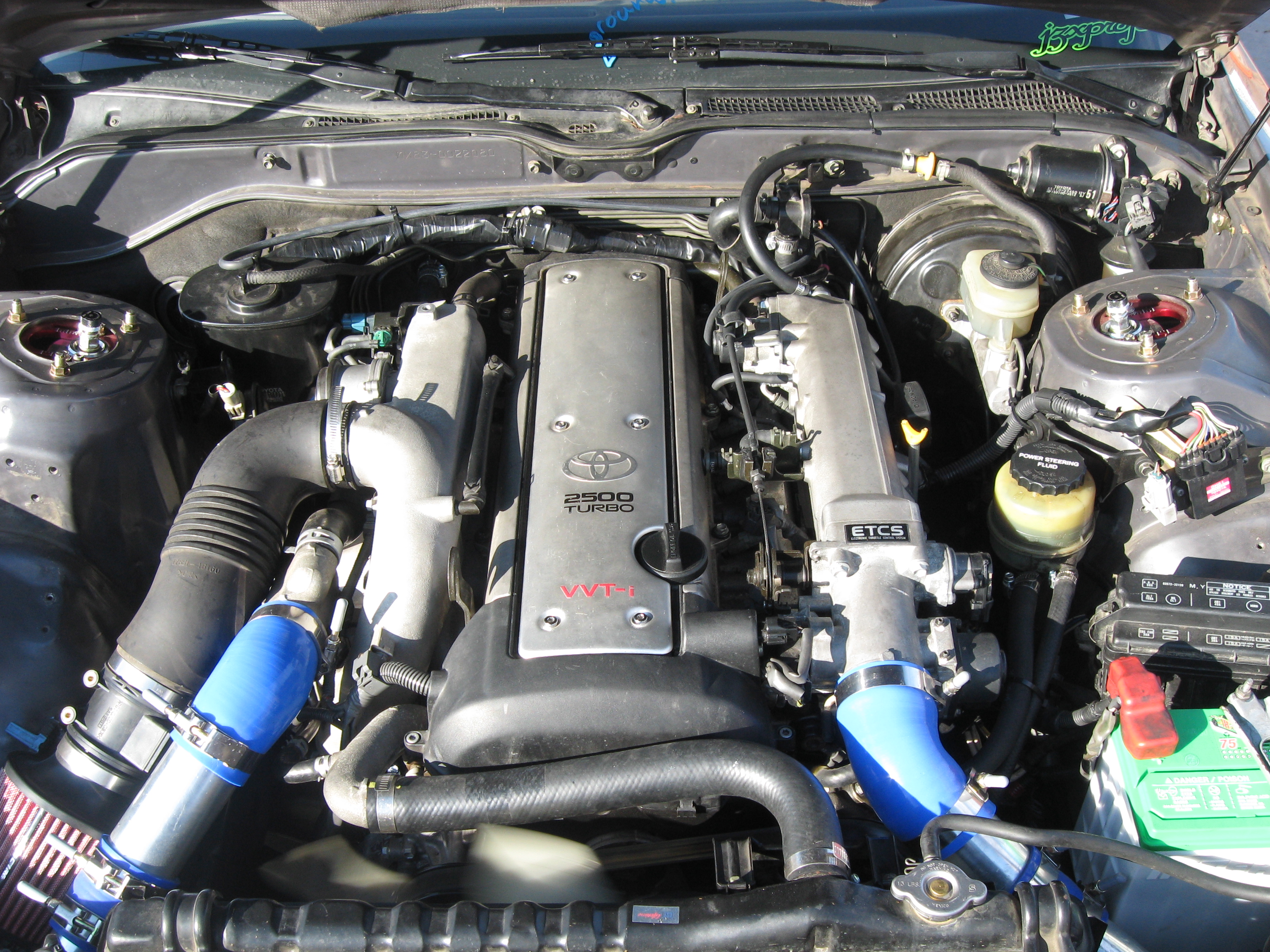
8. **Toyota 2JZ-GE/GTE Inline-Six**The Toyota 2JZ engine family, particularly the naturally aspirated GE and turbocharged GTE variants, has achieved near-mythical status in automotive circles. These engines are celebrated for combining exceptional performance with unparalleled durability, captivating enthusiasts worldwide. Introduced in the early 1990s and most famously powering the legendary Toyota Supra, these 3.0-liter inline-six engines were massively overengineered during Japan’s economic bubble, resulting in blocks that could comfortably handle far more power than their initial factory ratings.
What truly makes the 2JZ exceptional is its fundamentally robust construction. It features an iron block with seven main bearings meticulously supporting a forged steel crankshaft, a foundation that provides incredible structural integrity even under extreme stress. The closed deck design offers a superior cylinder seal and minimizes warping under pressure. Even the timing belt system, rather than a chain, has proven surprisingly reliable when maintained diligently, a testament to Toyota’s precise engineering.
The stock head studs, connecting rods, and bearings were all built to withstand forces well beyond factory specifications. The naturally aspirated 2JZ-GE, which powered vehicles like the Lexus GS300, IS300, and SC300, routinely surpasses 300,000 miles with basic maintenance, often running without major issues well into the 400,000-mile range. Even the turbocharged 2JZ-GTE, despite enduring significantly more heat and pressure, demonstrates similar longevity when properly maintained, proving its mettle in demanding situations. Its remarkable tolerance for neglect, with stories of engines surviving extended oil change intervals, further solidifies its legend.
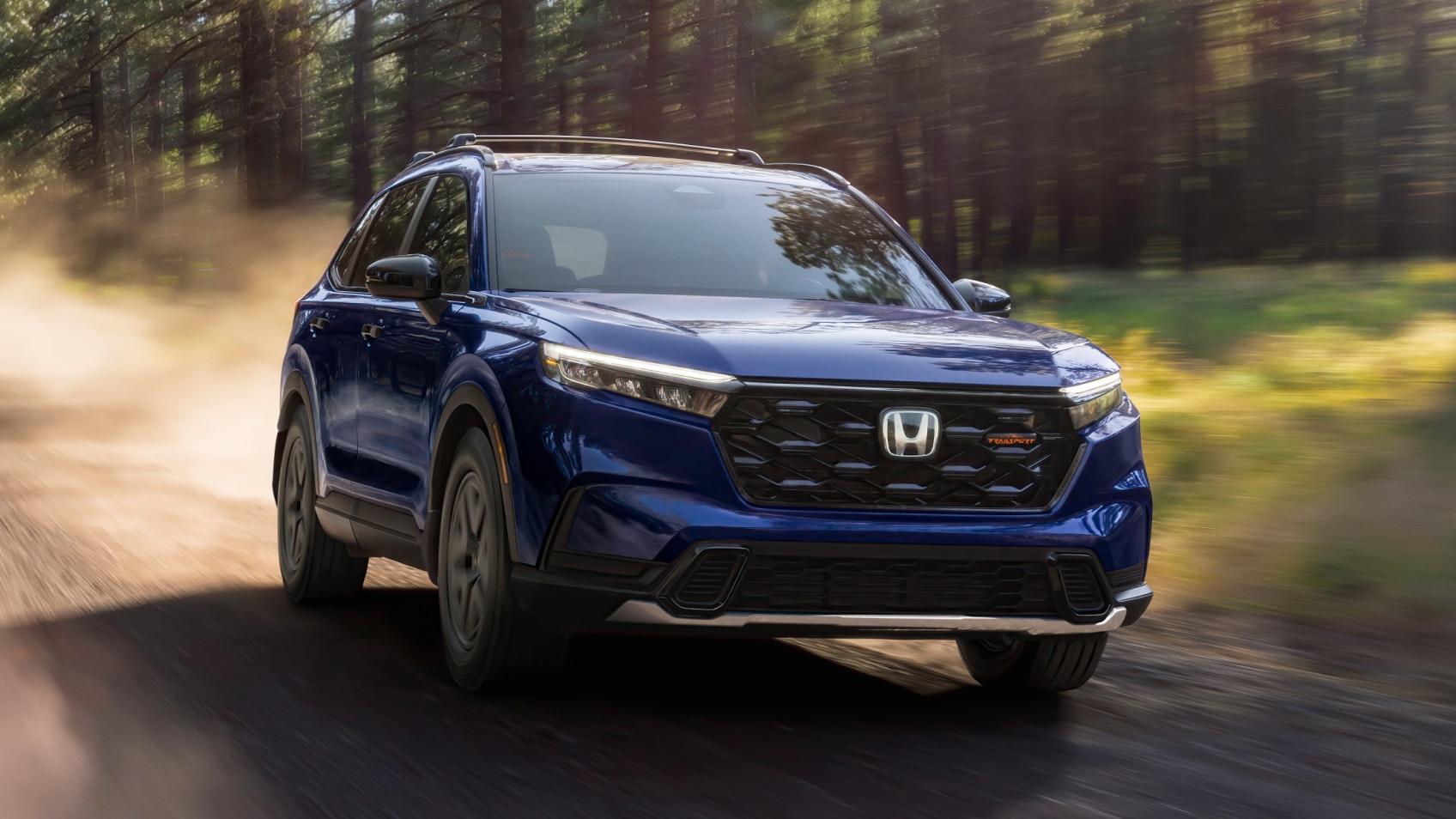
9. **Honda B-Series VTEC Engines**Honda’s B-series VTEC engines, produced from 1989 to 2001, stand as a remarkable engineering achievement, blending highly efficient, high-revving performance with exceptional reliability and longevity. These 1.6-1.8 liter four-cylinder engines, found in iconic models like the Civic, Integra, and Del Sol, revolutionized the compact performance segment by delivering motorcycle-like specific output—horsepower per liter—while maintaining Honda’s revered durability.
The inherent longevity of the B-series stems from key design elements and Honda’s meticulous approach. Unlike competitors focused on chasing torque through displacement, Honda engineered a lightweight, high-compression engine with an exceptional valvetrain. The now-famous VTEC (Variable Valve Timing and Lift Electronic Control) system provided two distinct cam profiles: one for efficiency, another for performance. This allowed conservative operation during normal driving, significantly reducing wear and stress on internal components, thus extending engine life.
Honda’s fanatical attention to material quality and precision manufacturing played a critical role, resulting in engines with extraordinarily tight tolerances. These precise specifications ensured that the engines maintained efficiency and performance over hundreds of thousands of miles. The forged crankshaft, oil-cooled pistons, and robust connecting rods, particularly in performance variants like the B16 and B18C, were significantly overbuilt for their power levels, providing substantial mechanical headroom that greatly contributed to their formidable endurance. Furthermore, its tolerance for sustained high-RPM operation is notable, with many examples accumulating over 300,000 miles despite enthusiastic driving.
The simplicity of maintenance further contributes to the B-series’ legendary longevity. Timing belt service, while necessary every 90,000 miles, is notably straightforward and inexpensive. The engines respond exceptionally well to regular oil changes, and their non-interference design provides an additional layer of security, meaning that even in the rare event of a timing belt failure, catastrophic valve-to-piston contact is effectively avoided. This combination of inherent durability and ease of maintenance, even when subjected to modifications, ensures their lasting legacy.
Car Model Information: 2018 Chevrolet Corvette Grand Sport
Name: Honda B engine
Manufacturer: Honda
Production: 1988–2001
Configuration: Naturally aspirated,Straight-four engine
Valvetrain: DOHC,VTEC
Successor: Honda K engine
Redline: 6,500–8,400 rpm
Compression: 8.8:1–11.1:1
Fueltype: Petrol engine
Fuelsystem: Programmed fuel injection
Coolingsystem: Radiator (engine cooling)
Displacement: cvt
Bore: {{cvt,81,mm,in,2
Stroke: {{cvt,77.4,mm,in,2
Power: cvt
Torque: cvt
Categories: 1989 introductions, All articles needing additional references, All articles with unsourced statements, Articles needing additional references from June 2013, Articles with short description
Summary: The B-series are a family of inline four-cylinder DOHC automotive engines introduced by Honda in 1988. Sold concurrently with the D-series which were primarily SOHC engines designed for more economical applications, the B-series were a performance option featuring dual overhead cams along with the first application of Honda’s VTEC system (available in some models), high-pressure die cast aluminum block, cast-in quadruple-Siamese iron liners.
To identify a Honda B-series engine, the letter B is normally followed by two numbers to designate the displacement of the engine, another letter, and in US-spec engines, another number. The Japanese spec-engines are normally designated with a four character alphanumeric designation. The B-series, the B20B variant in particular, is not to be confused with the earlier Honda B20A engine introduced in 1985 and primarily available in the Prelude and Accord-derived vehicles from 1985 to 1991. While sharing some design elements and both being multivalve Honda four-cylinders, the B-series and B20A differ substantially in architecture, enough to be considered distinct engine families.
They were made in 1.6 L (1,595 cc), 1.7 L (1,678 cc), 1.8 L (1,797 cc), 1.8 L (1,834 cc), and 2.0 L (1,973 cc) variants, with and without VTEC (Variable Valve Timing and Lift Electronic Control). Later models have minor upgrades including modifications to the intake valves and ports and piston tops, along with individual cylinder oil injectors (B18C models). They produce between 126 hp (94 kW; 128 PS) and 197 hp (147 kW; 200 PS), with some models capable of a redline of 8400 rpm.
Although it has many variations, the basic design differs very little among the B-Series. There are actually two short blocks which are used for the entire series. The distinction between them was the cylinder block deck height. The one used for B16 and B17 engines (except for B16B) has a deck height of 203.9 mm (8.03 in) while the short block used for B16B, B18 and B20 engines has a deck height of 212 mm (8.3 in).
The Honda B16 has appeared in six different forms over the years.
The Honda B-series was replaced by the K-series in Civic, Integra, Odyssey, and CR-V applications.
Get more information about: Honda B engine
Buying a high-performing used car >>>
Brand: Honda Model: B-Series VTEC Engine
Price: $59,896 Mileage: 26,662 mi.
Read more about: Why Rappers Are Shifting Gears: The Undeniable Allure of Ultra-Rare Japanese Tuner Cars Over European Supercars

10. **Cummins 5.9L ISB Inline-Six Diesel**The Cummins 5.9L ISB inline-six diesel engine truly represents the gold standard of reliability in the demanding consumer truck market. This formidable engine powered Dodge Ram trucks from 1989 through 2007, fundamentally altering perceptions of what longevity truly means in a heavy-duty pickup. Countless examples effortlessly eclipse the 500,000-mile mark with their original internal components often still intact, a testament to its enduring power.
The foundation of the 5.9L Cummins’ extraordinary durability begins with its inherent architecture: a straight-six configuration. This design inherently balances reciprocating forces, significantly reducing vibration and stress on the rotating assembly. The robust cast iron block and head provide exceptional strength and thermal stability, crucial for a diesel engine. The massive forged steel crankshaft rides on seven main bearings, delivering unparalleled support even under extreme loads. Connecting rods and wrist pins are similarly overbuilt, handling stresses far beyond factory specifications with ease.
The earlier 12-valve versions (1989-1998) are particularly renowned for their remarkable simplicity. They featured fully mechanical direct injection, utilizing the virtually bulletproof Bosch P7100 injection pump, and mechanical lifters. This pure mechanical simplicity meant minimal electronics to fail, making these versions not only exceptionally reliable but also remarkably serviceable decades after manufacture. Parts availability remains strong, due to the engine’s enduring popularity. Even later 24-valve models maintained core mechanical integrity with added electronic controls, without compromising fundamental reliability.
What truly separated the Cummins from competitors was its distinct commercial heritage. Unlike engines designed primarily for passenger vehicles, the 5.9L ISB was essentially a detuned commercial truck engine, operating comfortably below its inherent design limits in pickup truck applications. This substantial engineering margin allowed the engine to effortlessly handle the rigors of heavy towing and demanding hauling while consistently maintaining its exceptional longevity. For many owners, the truck body often deteriorates long before the Cummins engine shows any significant signs of giving up, a powerful testament to its enduring reliability.
Car Model Information: 2014 RAM 2500 Tradesman
Name: Dodge Ram / Ram pickup
Caption: 2017 Ram 1500 Express
Manufacturer: Dodge
ModelYears: 1981–present
Production: October 1980 – present
Class: Pickup truck#Full-size pickup truck,Pickup truck#Heavy-duty pickup truck
Layout: Front-engine, rear-wheel-drive layout,rear-wheel drive
Predecessor: Dodge D series
Categories: 1990s cars, 2000s cars, 2010s cars, 2020s cars, All-wheel-drive vehicles
Summary: The Ram pickup (marketed as the Dodge Ram until 2010 when Ram Trucks was spun-off from Dodge) is a full-size pickup truck manufactured by Stellantis North America (formerly Chrysler Group LLC and FCA US LLC) and marketed from 2010 onwards under the Ram Trucks brand. The current fifth-generation Ram debuted at the 2018 North American International Auto Show in Detroit, Michigan, in January of that year.
Previously, Ram was part of the Dodge line of light trucks. The Ram name was introduced in October 1980 for model year 1981, when the Dodge D series pickup trucks and B series vans were rebranded, though the company had used a ram’s-head hood ornament on some trucks as early as 1933.
Ram trucks have been named Motor Trend magazine’s Truck of the Year eight times; the second-generation Ram won the award in 1994, the third-generation Ram heavy-duty won the award in 2003, the fourth-generation Ram Heavy Duty won in 2010 and the fourth-generation Ram 1500 won in 2013 and 2014, and the current fifth-generation Ram pickup became the first truck in history to win the award four times, winning in 2019, 2020, 2021 and most recently, 2025.
Get more information about: Ram pickup
Buying a high-performing used car >>>
Brand: Dodge Model: Ram
Price: $28,455 Mileage: 147,679 mi.
Read more about: Unleashing Raw Power: A MotorTrend Deep Dive into the 11 Best Diesel Engines for Heavy-Duty Trucks
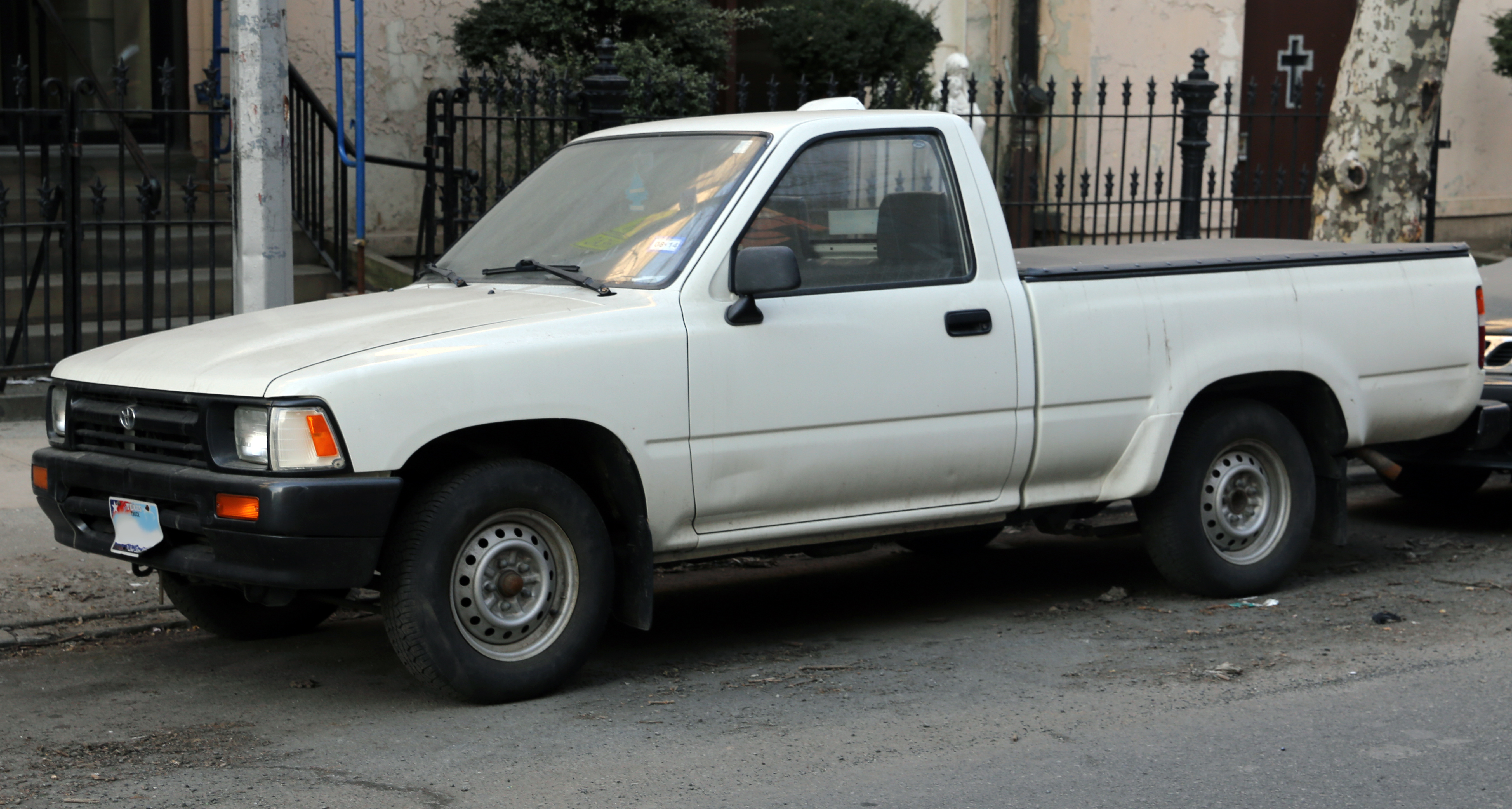
11. **Toyota 22R/22RE Inline-Four**The Toyota 22R and its fuel-injected counterpart, the 22RE, stand as enduring monuments to purposeful engineering simplicity, having reliably powered a wide array of Toyota trucks, 4Runners, and Celicas from 1981 through 1995. This 2.4-liter inline-four engine family earned its truly bulletproof reputation not through impressive headline-grabbing specifications, but rather through an almost obsessive focus on unwavering reliability, becoming the foundational backbone of Toyota’s global reputation for building virtually indestructible vehicles.
What makes the 22R/22RE truly extraordinary isn’t reliance on groundbreaking technological innovation, but rather Toyota’s steadfast commitment to refined, proven engineering principles. The iron block features a simple overhead cam design paired with a robust timing chain that, unlike many competitors, included a dual-row setup on earlier models, upgraded to an even more durable design in 1985. This incredibly resilient timing system often exceeds 300,000 miles before requiring any replacement, a stark contrast to the much shorter intervals common with timing belts in other engines.
The engine’s round exhaust ports were deliberately prioritized for thermal stability and consistent cooling over maximum flow, effectively preventing localized hot spots that lead to head gasket failures in many other four-cylinder engines. The cylinder head was meticulously designed with generous material thickness, providing excellent clamping force and significantly reducing the likelihood of warping. Toyota’s precision manufacturing ensured exceptional consistency, maintaining tight tolerances that preserved oil pressure and minimized internal wear even after hundreds of thousands of miles. Its remarkable tolerance for neglect, surviving extended oil change intervals and overheating, cemented its legend in demanding environments.
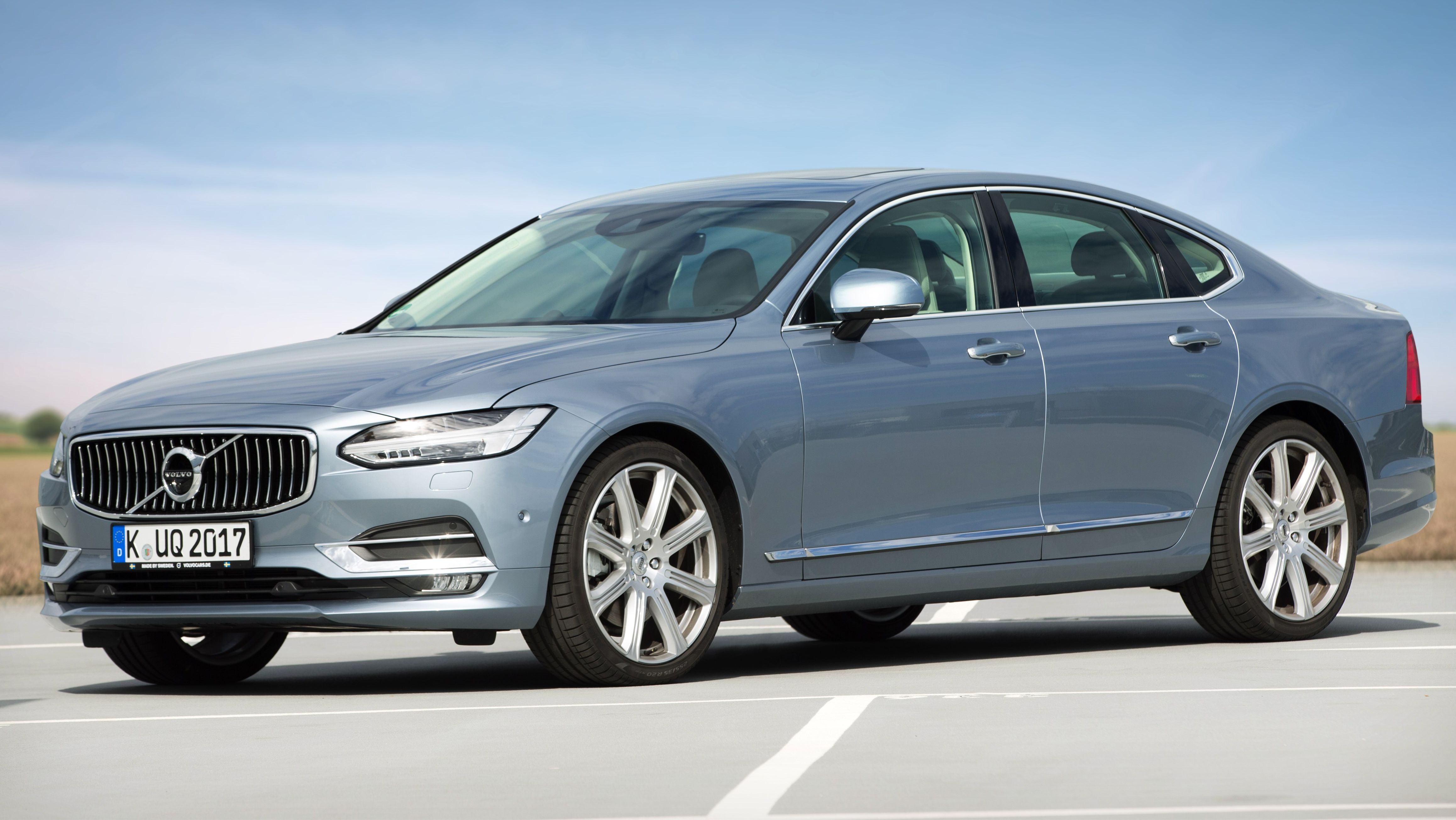
12. **Volvo Redblock (B230) Inline-Four**The Volvo Redblock engine family, particularly the 2.3-liter B230 variant produced from 1985 to 1998, has deservedly earned cult status for its truly extraordinary durability. This engine, a staple powerplant for various 200, 700, and 900 series Volvo models, perfectly exemplifies the renowned Swedish manufacturer’s philosophy of overbuilt engineering and safety-focused design principles applied to powertrain development. It is an engine built to last, embodying Volvo’s commitment to reliability.
The B230’s exceptional longevity begins with its very basic and unyielding architecture: a cast iron block and head. These components boast generous wall thicknesses, providing superior rigidity and thermal stability compared to lighter, more flexible aluminum designs. The innovative siamese cylinder design, with no water jackets between cylinders, created an extremely strong block structure. Concurrently, the seven main bearing crankshaft design provided exceptional support for the robust forged steel crankshaft—an unusual feature in a four-cylinder, highlighting its overbuilt nature.
What truly distinguished the B230 was Volvo’s conservative yet highly effective approach to engineering safety margins. While many contemporary engines were designed with tighter tolerances and higher specific outputs, Volvo deliberately under-stressed the B230, typically running it far below its inherent mechanical limits. Even turbocharged variants maintained substantial headroom, with connecting rods and bearing surfaces designed to handle significantly more power than their factory specifications, ensuring reliable operation even under boosted conditions.
This conservative engineering approach meant that even under adverse conditions—including poor maintenance, extreme temperatures, or consistently high loads—the engine continued to function reliably. The B230’s oiling system further contributed to its legendary status, featuring a high-capacity oil pump and generously sized oil galleys that consistently maintained stable oil pressure, even in high-mileage examples. The top-feed oiling design for the turbocharger (in forced induction variants) proactively ensured proper lubrication during cold starts, effectively preventing premature turbo failures.

13. **Nissan RB Series Inline-Six**The Nissan RB series engines, particularly the formidable 2.6-liter RB26DETT found in the iconic Skyline GT-R and the equally robust 3.0-liter RB30 used extensively in Australian-market vehicles, represent a truly perfect balance of high-performance potential and extraordinary durability. Produced from 1985 through 2002, these legendary inline-six engines have cultivated a global cult following among enthusiasts for their remarkable ability to handle immense power increases while simultaneously maintaining an impressive level of reliability, a testament to Nissan’s engineering prowess.
The RB’s exceptional longevity begins with its fundamental architecture: an inline-six configuration. This design inherently balances primary and secondary forces, which significantly reduces vibration and stress on internal components, contributing to smoother operation and extended life. The robust iron block provides superior rigidity and cylinder seal compared to more lightweight aluminum designs, featuring thick cylinder walls that are highly resistant to deformation even under high boost pressures. The seven main bearing crankshaft design ensures exceptional support for the rotating assembly, distributing loads evenly and effectively reducing localized stress.
What truly distinguishes the RB series, especially the twin-turbocharged RB26DETT, is its substantial engineering margin. Nissan officially rated the engine at 276 horsepower due to Japan’s “gentlemen’s agreement” limiting stated power, but the actual output was consistently much higher, and critically, the mechanical components were meticulously designed to handle far more. The connecting rods, often the weak point in high-performance engines, feature extraordinary strength in their stock form, while the oil pump provides generous and consistent pressure, even at high RPMs, diligently protecting vital bearings under the most extreme conditions. The RB’s head design further contributes to its legendary status.
—
Car Model Information: 2018 Chevrolet Corvette Grand Sport
Name: Nissan Skyline GT-R
Caption: 2002 Nissan Skyline GT-R V·spec II (BNR34)
Manufacturer: Nissan
Production: unbulleted list
Assembly: unbulleted list
Class: Sports car
Related: unbulleted list
Transmission: unbulleted list
Successor: Nissan GT-R
Categories: 1970s cars, 1980s cars, 1990s cars, 2000s cars, 24 Hours of Le Mans race cars
Summary: The Nissan Skyline GT-R is a Japanese sports car based on the Nissan Skyline range. The first cars named “Skyline GT-R” were produced between 1969 and 1972 under the model code KPGC10, and were successful in Japanese touring car racing events. This model was followed by a brief production run of second-generation cars, under model code KPGC110, in 1973. After a 16-year hiatus, the GT-R name was revived in 1989 as the BNR32 (“R32”) Skyline GT-R. Group A specification versions of the R32 GT-R were used to win the Japanese Touring Car Championship for four years in a row. The R32 GT-R also had success in the Australian Touring Car Championship, with Jim Richards using it to win the championship in 1991 and Mark Skaife doing the same in 1992, until a regulation change excluded the GT-R in 1993. The technology and performance of the R32 GT-R prompted the Australian motoring publication Wheels to nickname the GT-R “Godzilla” in its July 1989 edition. Wheels then carried the name through all the generations of Skyline GT-Rs, most notably the R34 GT-R, which they nicknamed “Godzilla Returns”, and described as “The best handling car we have ever driven”. In tests conducted by automotive publications, the R34 GT-R covered a quarter of a mile (402 metres) in 12.2 seconds from a standing start time and accelerated from 0–100 km/h (0–62 mph) in 4.4 seconds. The Skyline GT-R became the flagship of Nissan performance, showing many advanced technologies including the ATTESA E-TS all-wheel drive system and the Super-HICAS four-wheel steering. Today, the car is popular for import drag racing, circuit track, time attack and events hosted by tuning magazines. Production of the Skyline GT-R ended in August 2002. The car was replaced by the GT-R (R35), an all-new vehicle based on an enhanced version of the Skyline V36 platform. Although visibly different, the two vehicles share similar design features and are manufactured in the same factory. The Skyline GT-R was never manufactured outside Japan, and the sole export markets were Hong Kong, Singapore, Australia and New Zealand, in 1991, and the UK (in 1997, due to the Single Vehicle Approval scheme). They are also popular across the world as used Japanese imports. Despite this, the Skyline GT-R has become an iconic sports car as a grey import vehicle in the Western world (mainly the United Kingdom, Australia, New Zealand, South Africa, Ireland, Canada, and the United States). It has become notable through pop culture such as The Fast and the Furious, Initial D, Shakotan Boogie, Tokyo Xtreme Racer, Wangan Midnight, Need for Speed, Forza, Driving Emotion Type-S, Test Drive, and Gran Turismo. In 2019, Nismo announced that it would resume production of spare parts for all generations of the Skyline GT-R, including body panels and engines.
Get more information about: Nissan Skyline GT-R
Buying a high-performing used car >>>
Brand: Nissan Model: Skyline GT-R
Price: $59,896 Mileage: 26,662 mi.
Read more about: Remember These? 14 Classic Cars From the 1980s That Everyone Forgot About (But Are Now Worth a Fortune!)
These engines, each a testament to meticulous engineering and a commitment to enduring quality, collectively represent the pinnacle of automotive resilience. In a world increasingly focused on the next big thing, these long-haul warriors remind us of the lasting value found in designs built to last, proving that true automotive endurance isn’t just about speed or luxury, but about unwavering dependability, mile after dependable mile. They are not merely components but legends, each telling a story of relentless performance and steadfast reliability, ensuring their place in the annals of automotive history for generations to come.

